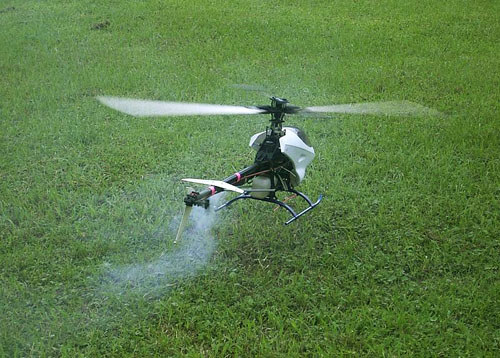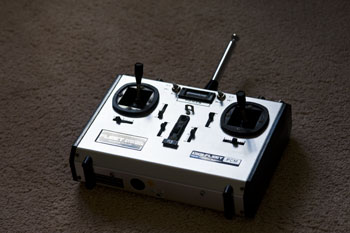Radio-controlled (R/C) helicopter-based aerial photography is arguably one of the most versatile forms of aerial photography available. The camera can be controlled extremely accurately and can be positioned to obtain angles not available to full-sized aircraft.
 Radio-controlled helicopters are available in a variety of sizes and at a wide range of prices. A reasonably large hobbyist's model suitable as a stable platform for aerial photography might cost between £1,000 and £2,000. The various models are categorized by rotor size. For aerial photography a minimum rotor size is about 500 mm although a larger rotor size, such as 800mm, is likely to be more stable and handle better in wind. Larger and more sophisticated helicopters, typically used for commercial applications and equipped with three-axis, gyro-stabilized gimbals and HD cameras, cost much more - perhaps £15,000 - £20,000.
Radio-controlled helicopters are available in a variety of sizes and at a wide range of prices. A reasonably large hobbyist's model suitable as a stable platform for aerial photography might cost between £1,000 and £2,000. The various models are categorized by rotor size. For aerial photography a minimum rotor size is about 500 mm although a larger rotor size, such as 800mm, is likely to be more stable and handle better in wind. Larger and more sophisticated helicopters, typically used for commercial applications and equipped with three-axis, gyro-stabilized gimbals and HD cameras, cost much more - perhaps £15,000 - £20,000.
Basic considerations are your objectives, whether the helicopter can lift the payload (camera) to be used, stability, and purchase price and maintenance costs. Choose a larger rotor size where possible as the helicopter will ultimately repay the additional expense in terms of stability, handling and picture quality. However, bear in mind that the cost of repairs following an accident increases with rotor size. Following an incident, a small machine might typically be repaired for £50 whereas the repair of a larger machine might cost hundreds of pounds.
Flying ability is a big factor, so beginners are well advised to gain experience with modest helicopters to avoid becoming disheartened by repeated repair bills. Note that the experience required includes not only flying ability but also competence as a helicopter mechanic. Helicopters are complicated machines.

The image on the left shows a typical R/C transmitter used by a helicopter pilot to control the machine. The controls themselves are proportional and relatively simple in concept, but not necessarily as easy to use as they might appear. A typical transmitter and receiver combination might have a range of about one mile, a distance much greater than necessary simply because the human eye cannot monitor the movements of a small helicopter accurately or safely at a distance greater that a few hundred yards.






